Related Tags
Amp FAQ: Servicing Bernie Marsden’s vintage Gibson amps (Part 1)
Our resident amp tech has a pair of vintage amps belonging to ex-Whitesnake guitarist Bernie Marsden in the shop, and both are in urgent need of some TLC.
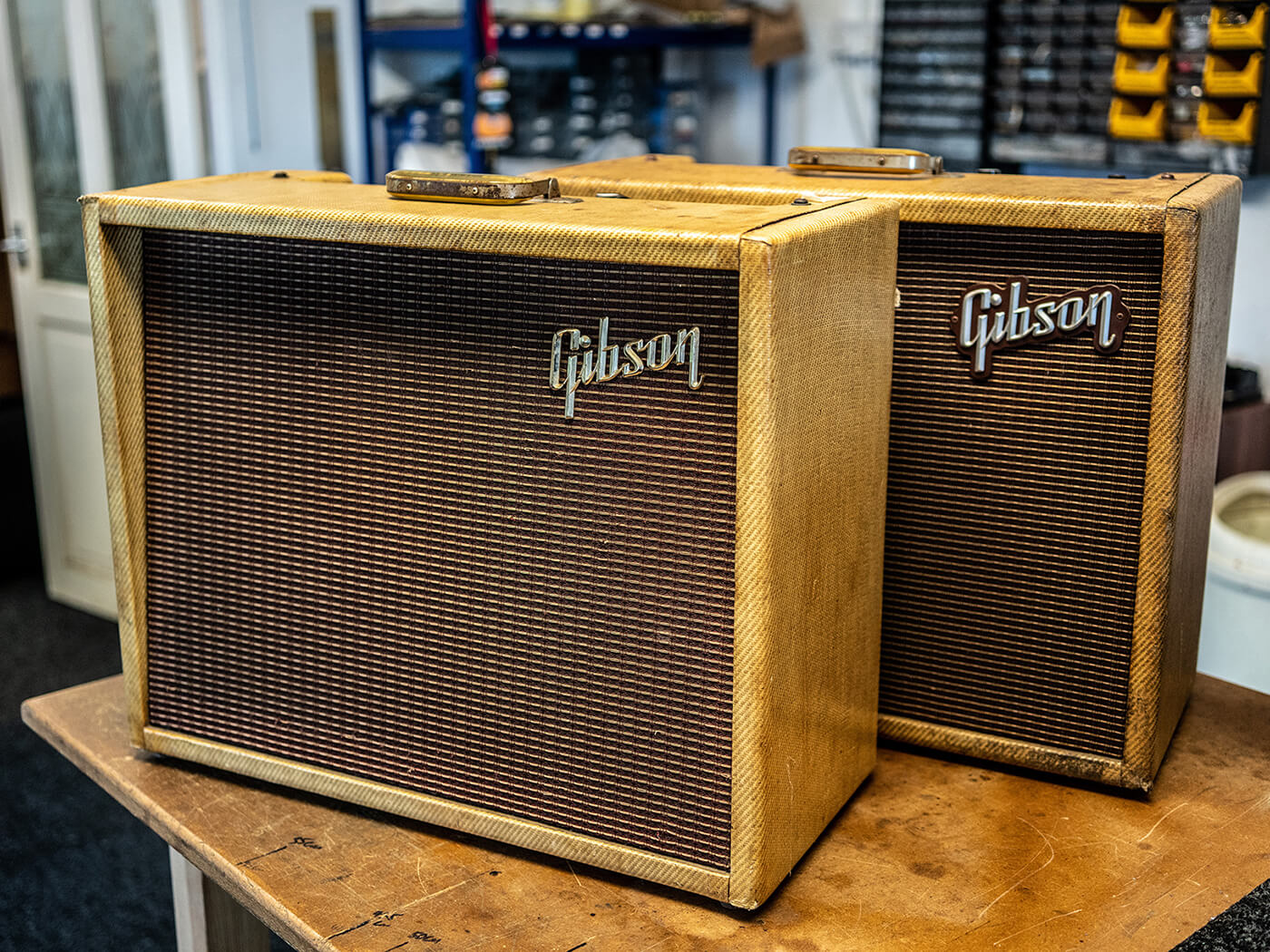
The Gibson Lancer and Ranger amplifiers, in desperate need of service
I recently received a phone call from Bernie Marsden who wanted to use his two vintage Gibson amplifiers in an upcoming recording session. They both weren’t performing as they should so was time for us to get the soldering iron out and make them ready for recording.
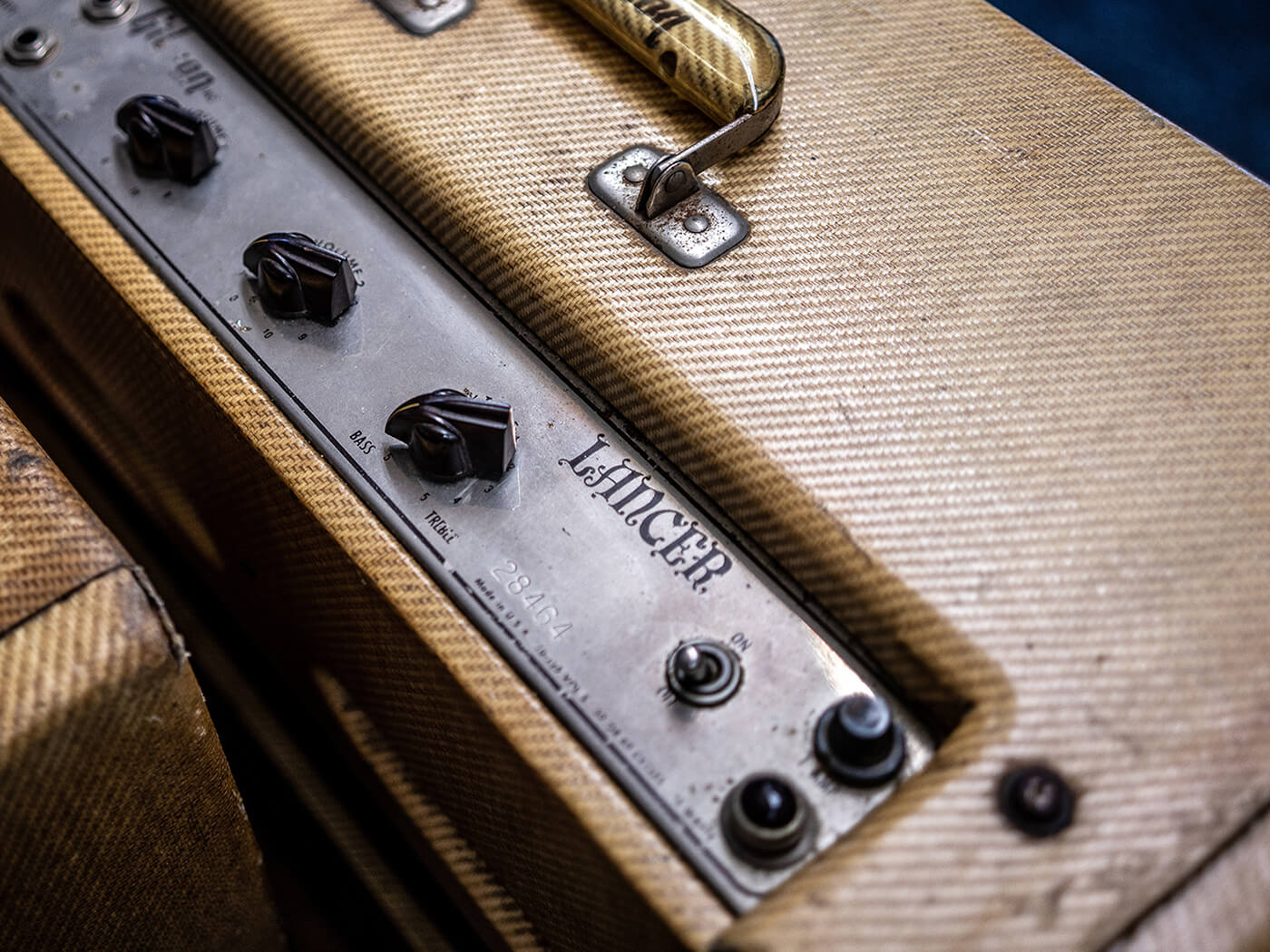
First on the bench is a Gibson Lancer amplifier, model GA-6 that first appeared in the 1960 Gibson catalogue with a list price of $135 ($1,340 adjusted for inflation). The older design, without the ‘Lancer’ moniker, is still shown in the 1959 edition of the catalogue. Shipping ledgers show 1,031 units were dispatched in 1959, and just 518 in 1960. There is no data for the split between the old and new models in 1959. This particular amplifier, serial #28464 dates to late-1959 and is unusual in that unlike the 1960 and 1961 models, it features a tag-board construction rather than the later eyelet board circuits. Quite a rare one then, as I cannot find a photo of another like this online.

Tweed tones
To the untrained eye, the schematic for this amplifier bears a remarkable resemblance to the late 5C3/early 5D3 Deluxe amplifiers from Fender, complete with paraphrase phase inverter and grid leak bias input stages. A closer look, however, reveals that the engineers at Gibson knew how to design a circuit and the component values chosen at critical locations are well thought out with the focus on power and clarity for both guitar and microphone.
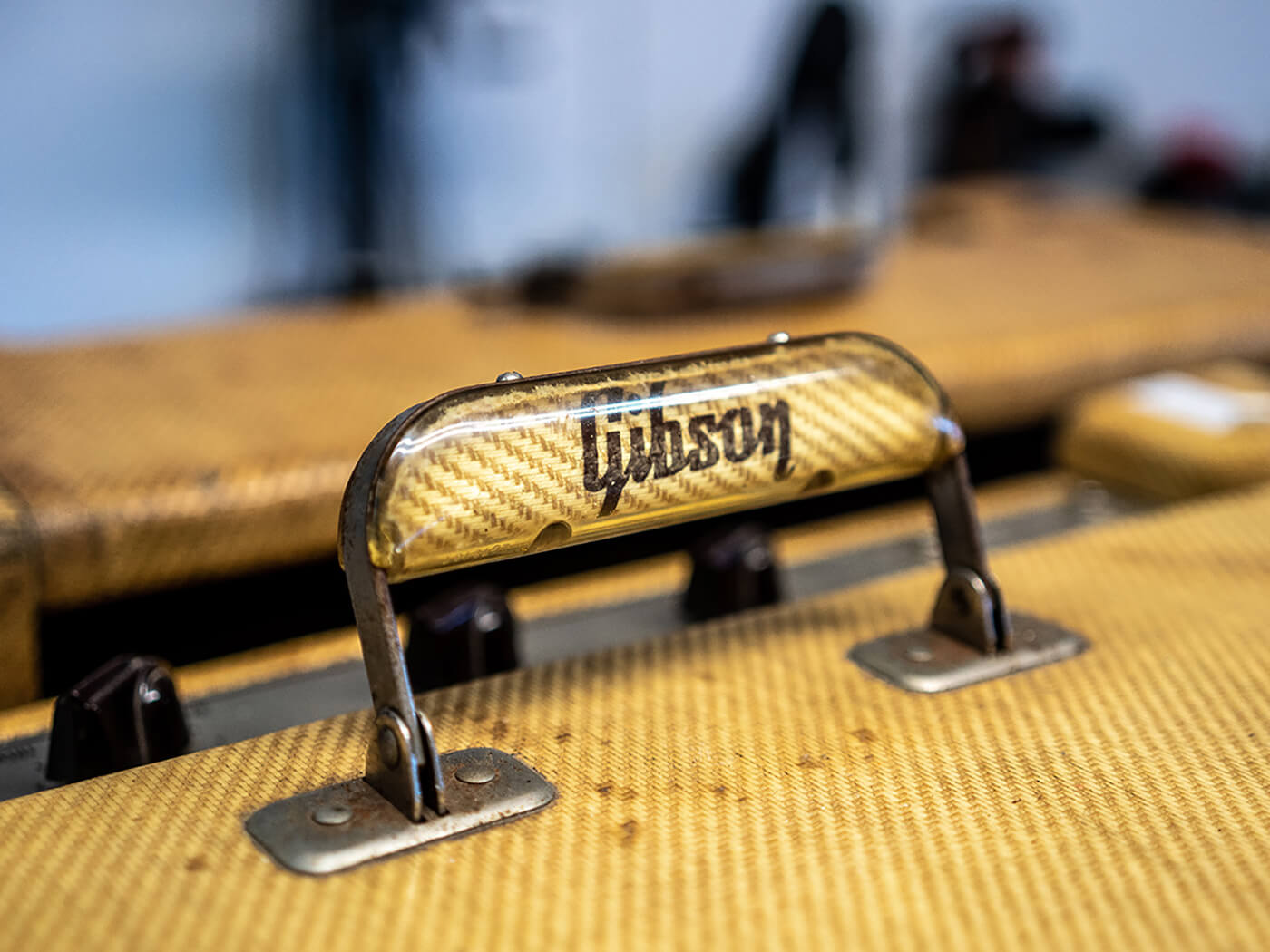
The cabinet is covered in tweed – or ‘twill-vinyl’ – and is adorned with the best-looking handle I’ve ever seen. The baffle is slanted backwards to help project the sound and the cabinet is made sturdily from finger-jointed Pine.

I know that this amplifier has been played recently, so after a quick visual inspection I’m happy to power it up and give it a play test. As always, a soft-start using a Current-limiting device is always recommended to ensure nothing goes awry. The amplifier comes to life quite quickly and we’re immediately presented with a mid-level hum that’s quite intrusive and indicative of old, leaky filter capacitors. We’ve talked previously about the importance of a cap job, and this amplifier is way overdue that service.
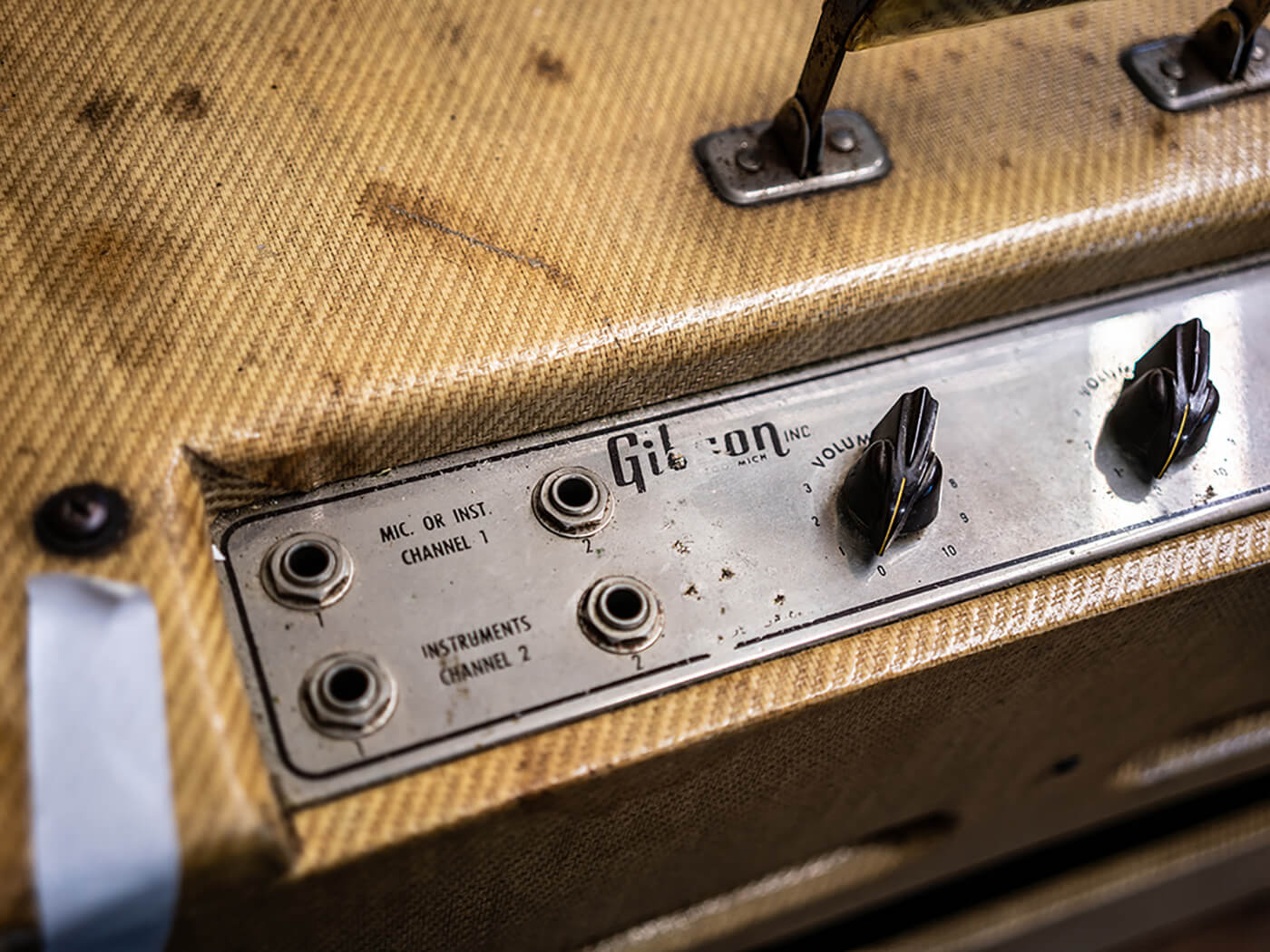
Despite having many guitars within arms reach, we find that a Looper pedal is an excellent tool for the workbench as it allows the use both hands for testing and repair while the Looper provides a consistent reference sound. We were very fortunate to have had Peter Honore record a number of single-track loops for our Boss RC-3 which get used regularly. By proxy, Pete plays nearly every Rift amplifier that comes off the bench, and every repair too! With our looper connected to the Guitar input, turning up the volume and tone controls reveal a glorious, rich tone that’s incredible. What a sound! This circuit, coupled to the vintage Jensen P12R Alnico speaker is a fantastic match the far exceeds my expectations.
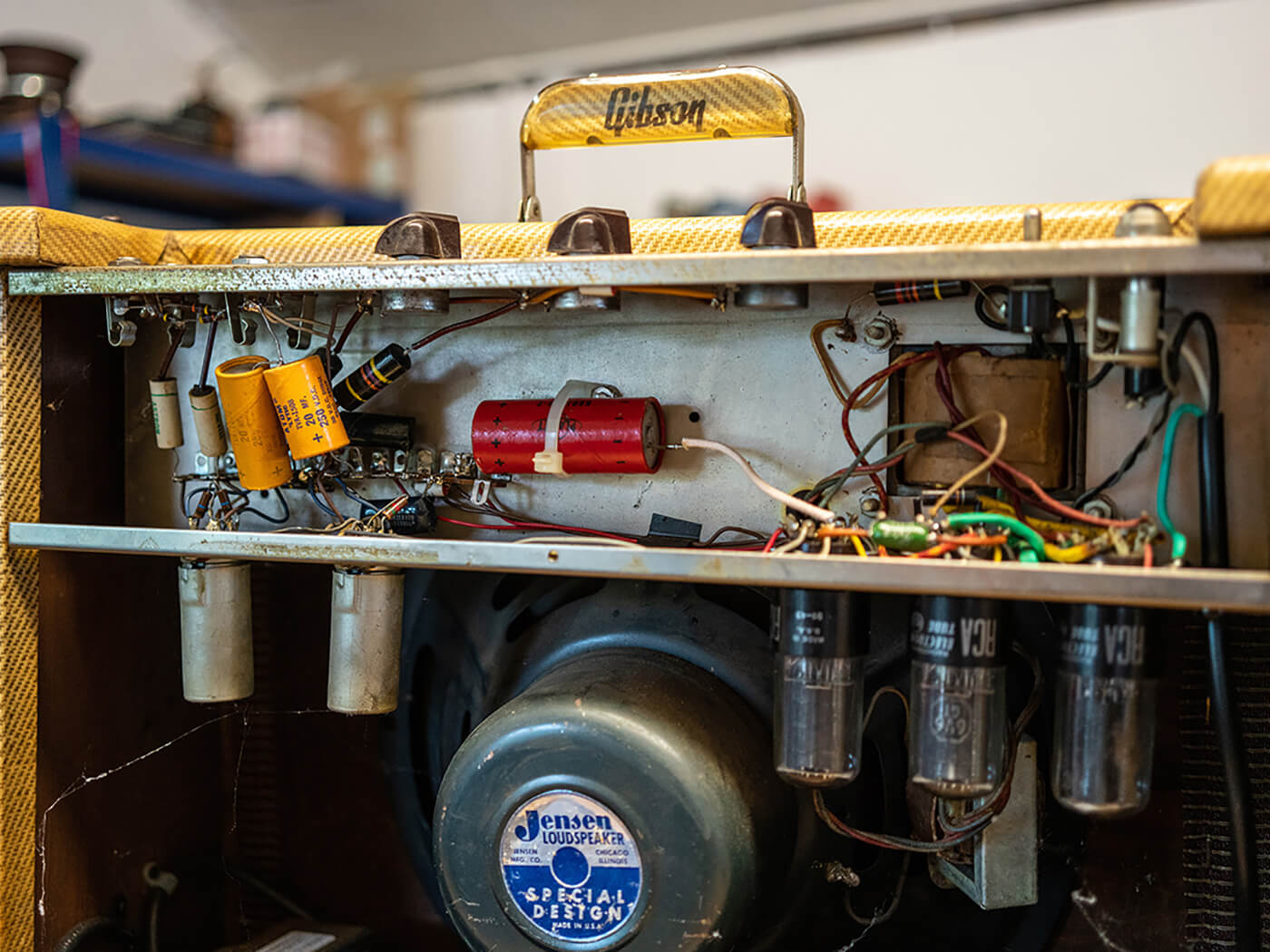
Scratch that
Unfortunately, all three of the controls are scratchy, with loud pops and rustles emanating from the speaker whenever they are turned. Your first port of call might be to clean the potentiometers but experience tells me that this is something else. If the scratchiness is inconsistent each time that the control is turned, then it’s probably dirty. If, however, it produces the same noise each time there’s high chance that DC voltage is making its way onto the pot’s wiper. A quick check with a voltmeter confirms this and we find near 10v on the controls, anything more than 0.1v is unacceptable. The cause will be the preceding coupling capacitors, which will definitely be leaky.
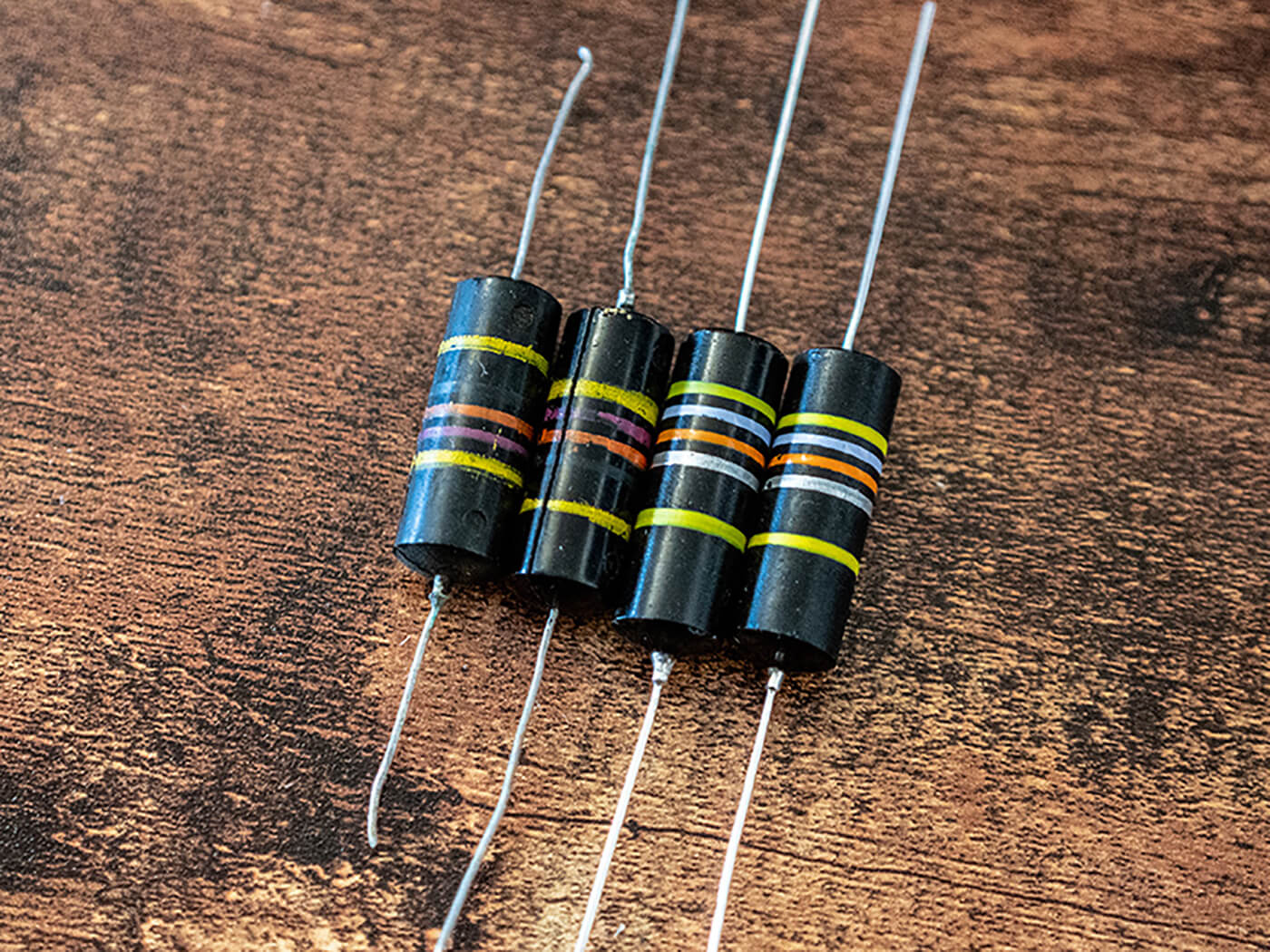
A visual inspection shows that one of the 47nF Bumblebee capacitors has split open, a common sight in TV/radio repair but less so in a guitar amplifier. Thankfully, direct replacements are available from Jupiter and will allow an almost ‘invisible’ repair.
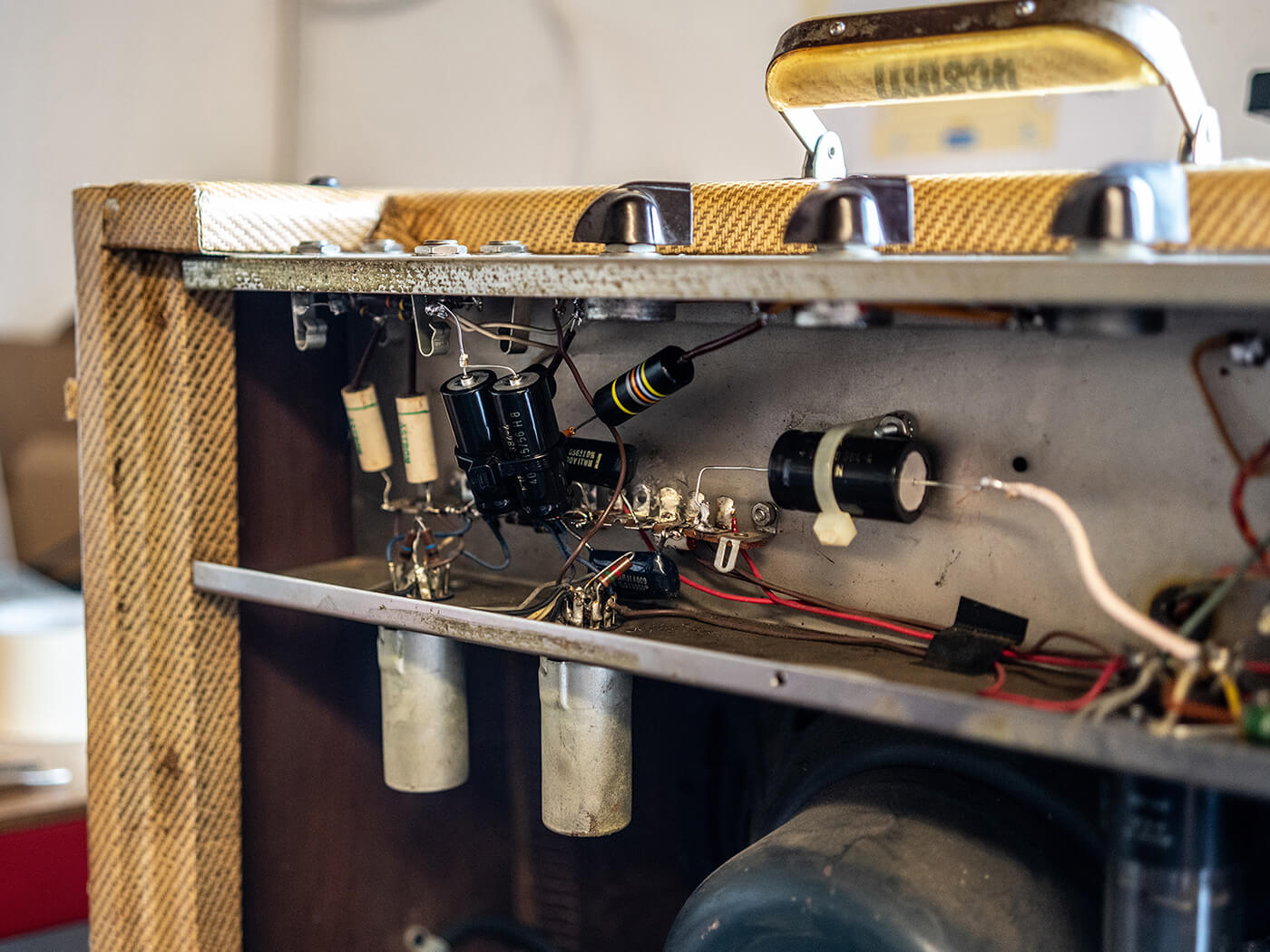
After both of the Bumblebees are replaced, the filter cap job completed, another play test reveals nothing more of concern, with everything working as intended. Output was rated at 14 watts and we measure exactly that on the bench. A quick hoover out of the cabinet, along with basic service items finishes this one up and handed back to Bernie. Come back next month to find out what happened with Bernie’s other Gibson amp, the Ranger…
Visit riftamps.com to check out Rift’s range of UK-built boutique amps.
